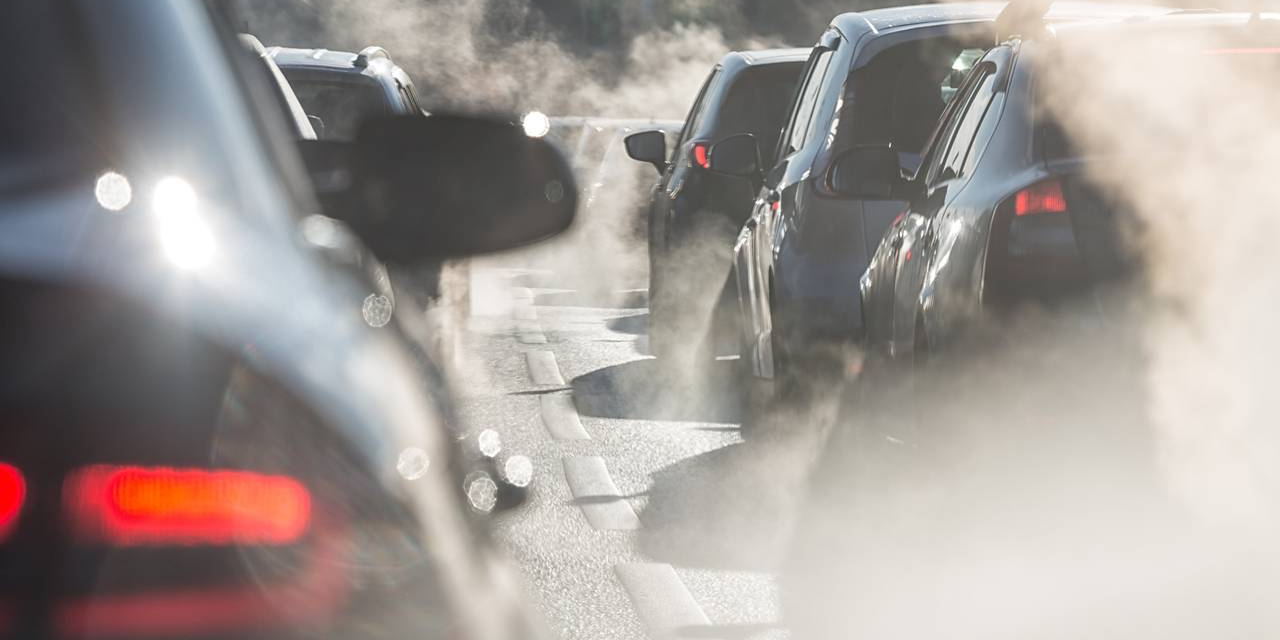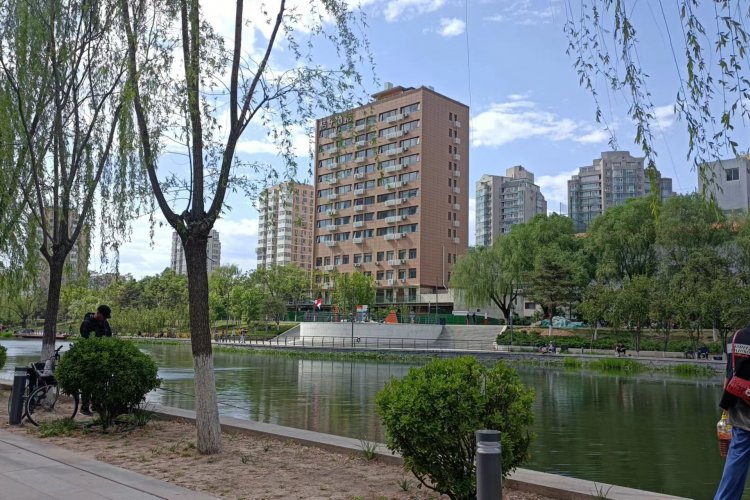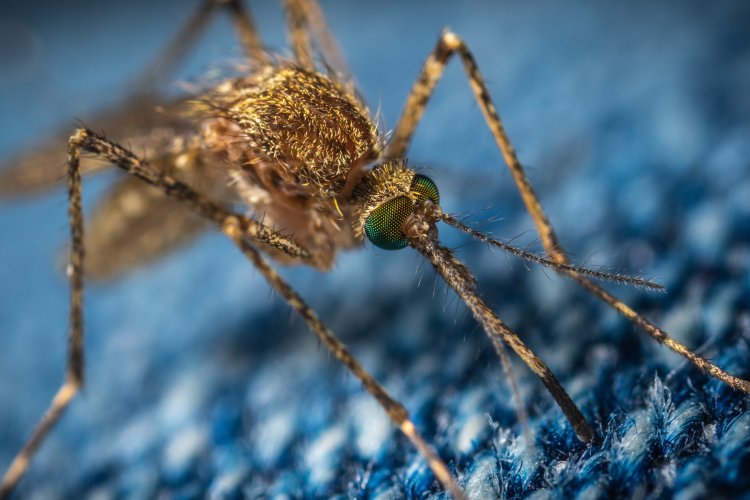Ozone Levels Are Rising: What You Need to Know About This Dangerous Pollutant
This post comes courtesy of Smart Air, a social enterprise and registered B-Corp dedicated to helping people in China breathe clean air without shelling out thousands of dollars for expensive purifiers.
Every year as summer approaches, levels of ozone – the invisible pollutant – tend to rise. In fact, ozone is becoming such a serious pollutant in China that the high levels during summer can at times make it more dangerous than PM2.5. Based on data analyzed by Smart Air, Beijing’s ozone levels are near peak in June – and nearly double the World Health Organization limit of 100μg/m³.
Beijing Ozone Levels
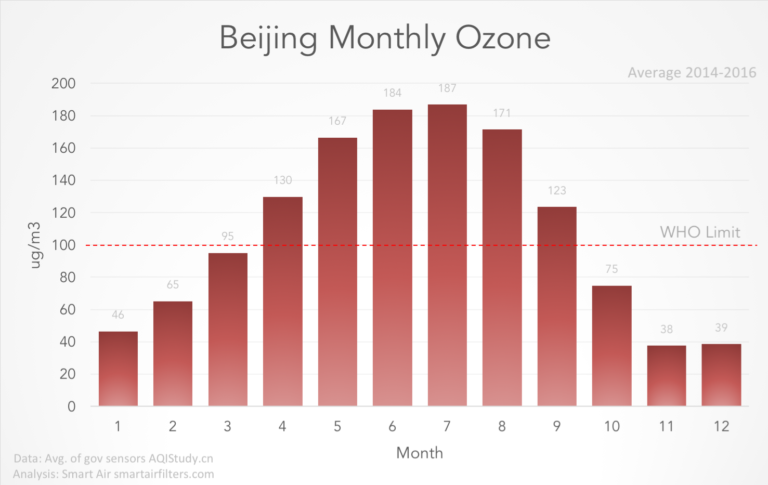
Shanghai Ozone Levels
Shanghai’s ozone data shows a similar pattern, with ozone peaking at 150 percent of the limit.
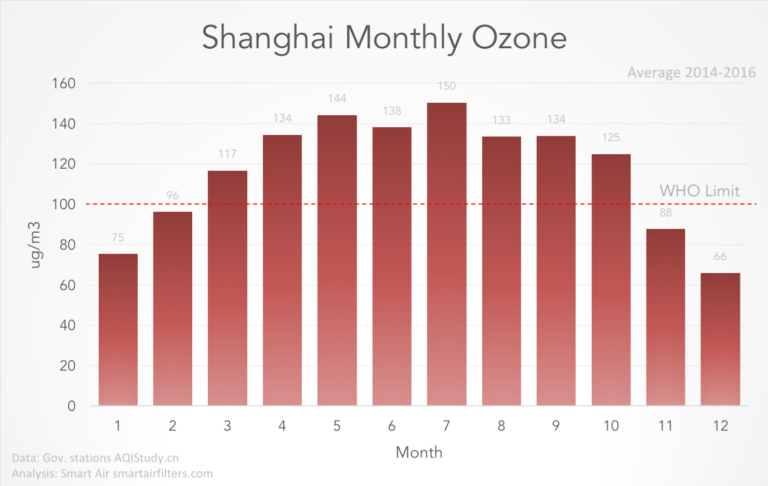
Where does ozone come from?
Ozone = Exhaust + Sunlight

Ozone levels tend to peak during the summer because two of the important ingredients – heat and sunlight – are more common then. When sunlight hits pollutants emitted by automobiles and power plants, it reacts to form ozone.
Ozone peaks in the hottest, sunniest part of the day. Ozone causes coughing, asthma, and long-term damage that increase the chance of heart attacks and cancer. What's more, on sunny and warm days, we often spend more time outside, which means that we're more exposed to ozone.
READ: Does Turning on the AC Bring Polluted Air Indoors?
How Much Is Too Much?
The World Health Organization’s limit is 100μg/m³. Beijing often surpasses that limit and on July 11, 2017, it reached 307μg/m³, which is still the highest level on record for the city.
Is Ozone a Problem Indoors?
Most ozone comes from outdoors, not indoors. And fortunately, ozone is highly unstable. As it comes into contact with indoor surfaces, it gets removed from the air.
Studies have found that air-conditioned homes with doors and windows closed have indoor ozone levels that are typically less than 10 percent of outdoor levels. But if you have a central air system that brings in outdoor air, ozone levels will be higher. With the doors and windows open, studies have found indoor ozone is about 50 percent to 75 percent of outdoor levels.

Can I Remove Ozone From My Home?
Studies have shown that activated carbon filters can reduce ozone. However, ozone is harder to remove than particulates. For one, most carbon filters need to be changed more frequently than particle filters.
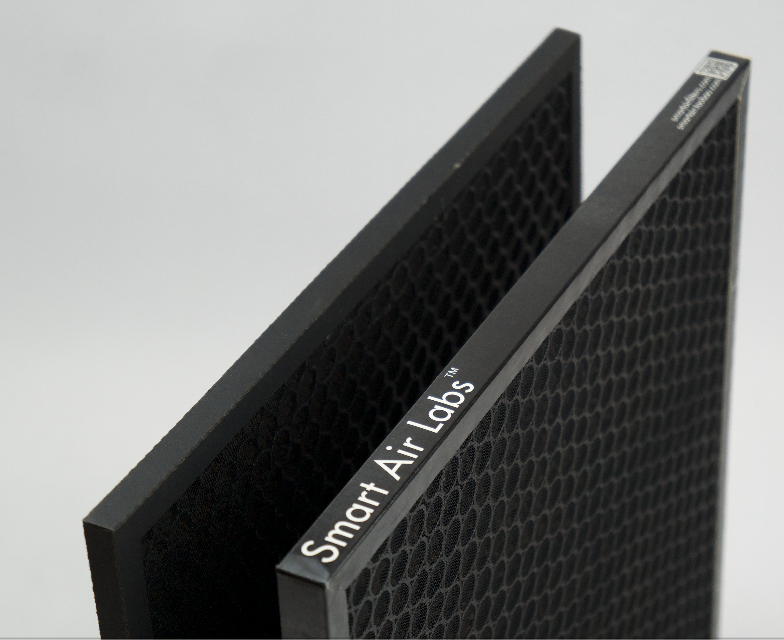
And compared to HEPA filters, most carbon filters are nowhere near as effective at capturing ozone. HEPA filters can remove 99 percent of particles from a single pass of air. For ozone, researchers estimate the average carbon filter removes about 60 percent of ozone in a single pass.
How Can I Find Out How Bad the Ozone Is Near Me?
How can we know if ozone is above the limit? Here’s how to find it on two AQI apps popular at Smart Air:
Weilan Ditu 蔚蓝地图
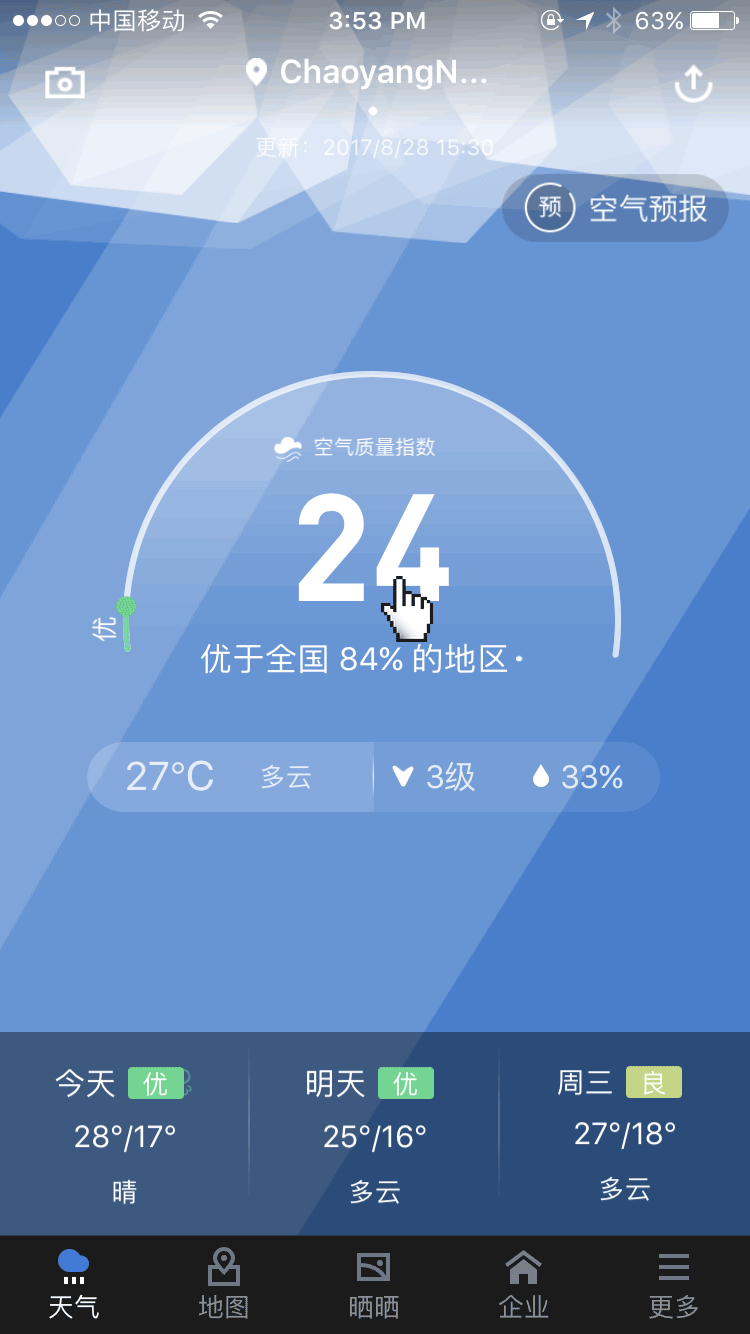
AirVisual

What Should I Do When Ozone Is High?
The United States Environmental Protection Agency recommends that you:
- Reduce the amount of time spent outdoors.
- Avoid high-intensity sports, such as football and basketball.
- If possible, shift outdoor activities to the morning or evening when ozone concentrations are lower.
Children Particularly At Risk
Children breathe more rapidly and have more lung surface area for their body size compared to adults, which means they take in more air per minute and inhale more air for their size. In fact, pound-for-pound, children breathe 50 percent more air than do adults.

As a result, children inhale a greater percentage of pollution. Ozone can cause breathing difficulties or asthma attacks in children.
Smart Air has created the world's most cost-effective air purifier, which will retail for USD 95. They are currently raising funds for production on Kickstarter. Read more about the campaign right here.
This post originally appeared on the Smart Air website.
Images: Inside EVs, courtesy of Smart Air

